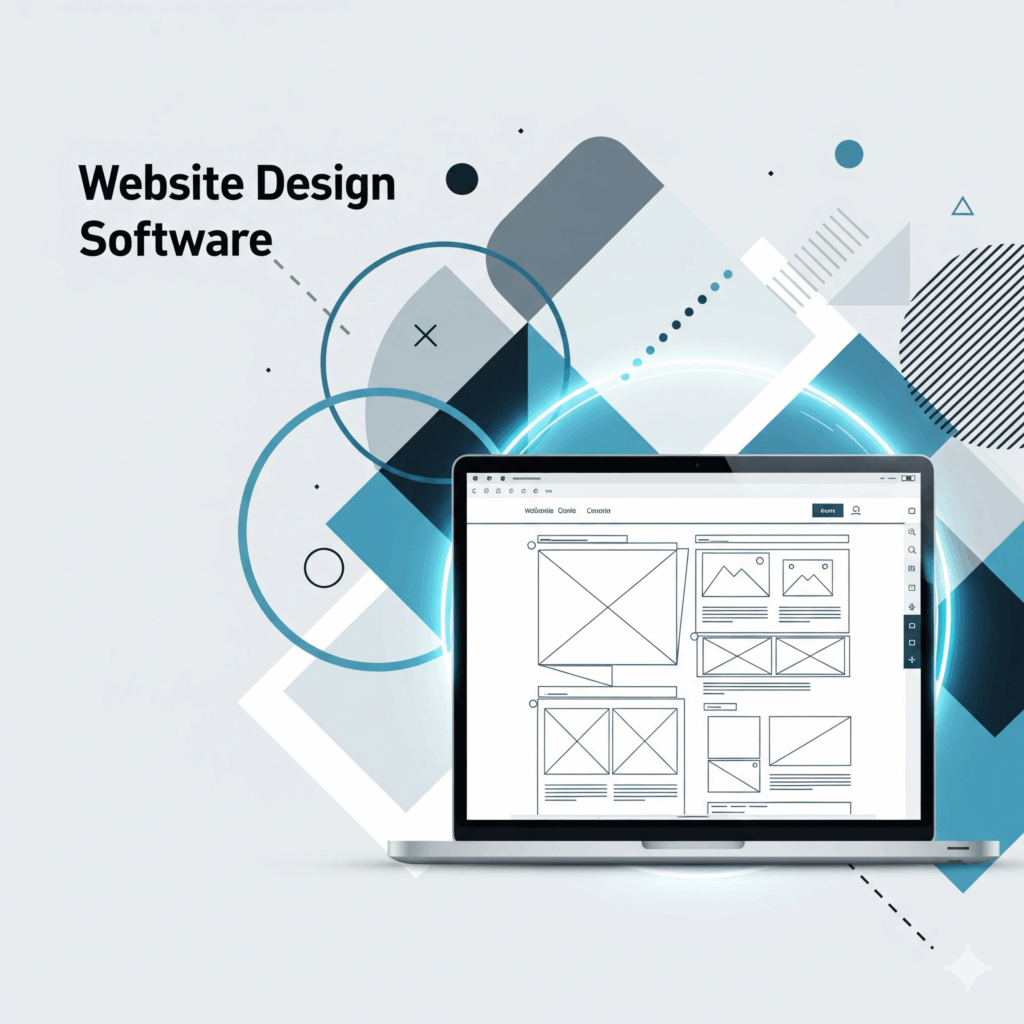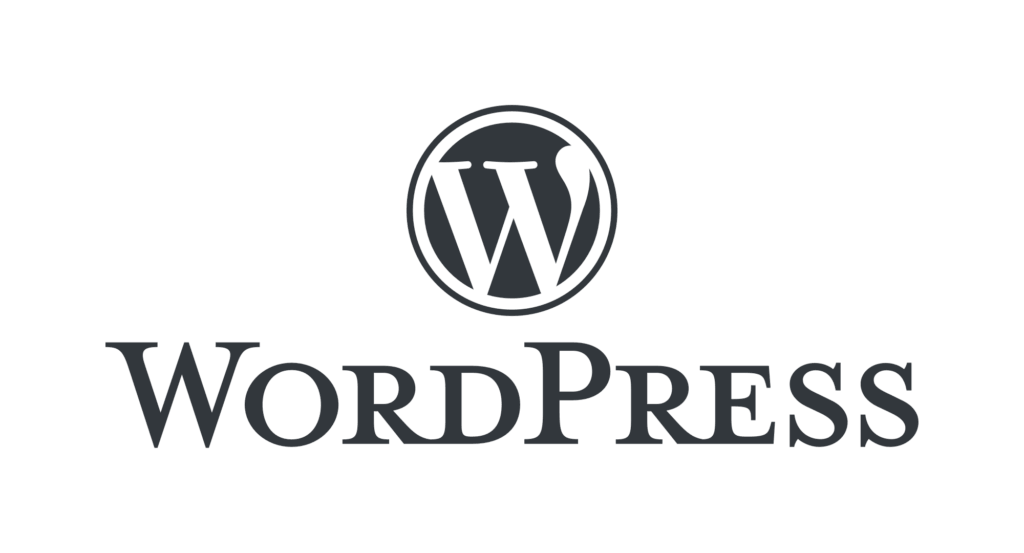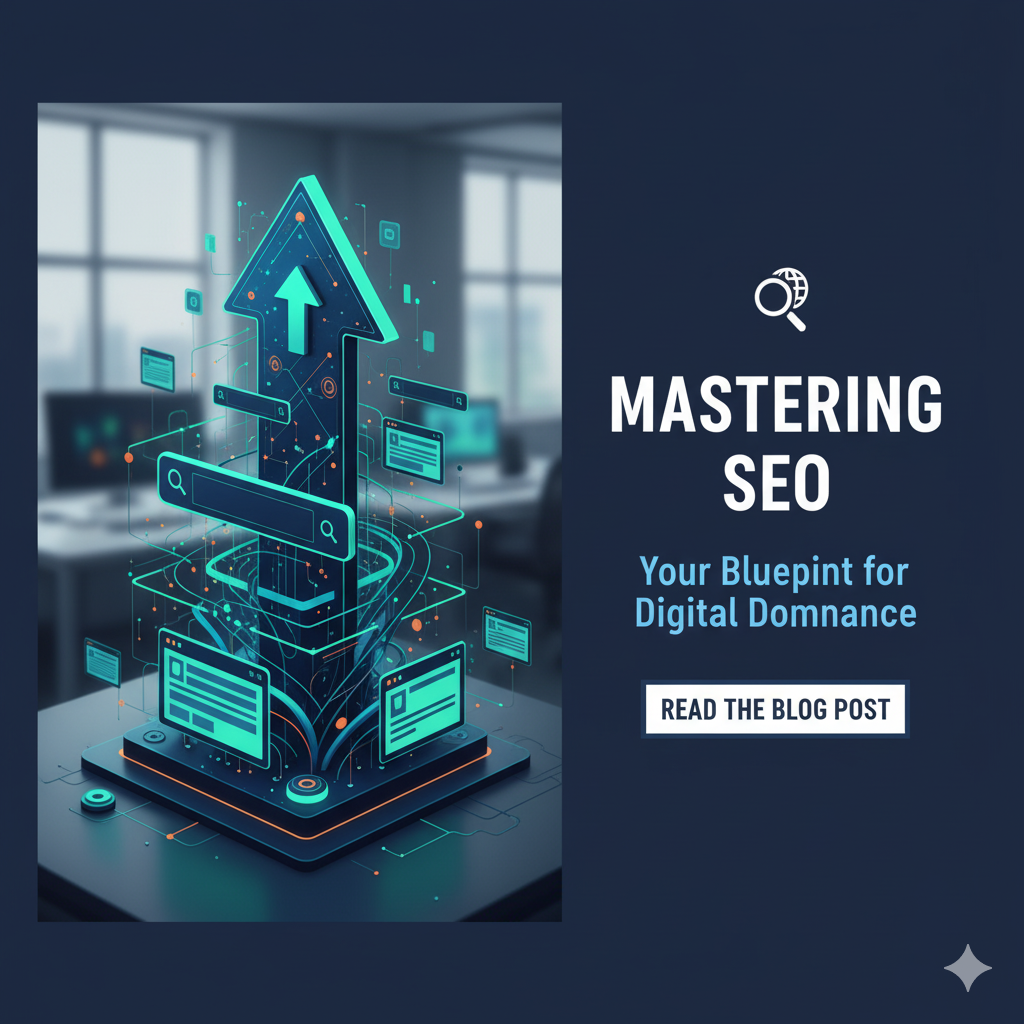Synopsis: Looking for the best website design software? Learn features, pros, cons, and pricing to choose the right platform for your business.
The Best Website Design Software in 2026: A Complete Guide
Building a website no longer requires advanced coding skills. Thanks to modern website design software, anyone can create a professional-looking site quickly and affordably. But with so many options—like Wix, WordPress, Squarespace, Weebly, Systeme.io, Google Sites, and Blogger—it’s important to choose the right tool for your needs.
In this guide, we’ll review each platform in detail, covering its features, pros, cons, and pricing to help you make an informed decision.
Common Mistakes Made by Small Business Owners Before Selecting the Right Platforms for Website Design
When launching an online presence, small business owners often rush into building their websites without proper planning. Choosing the right website design software or platform is one of the most critical decisions that impacts performance, scalability, and overall business success. Unfortunately, many entrepreneurs make costly mistakes during this stage, either due to lack of knowledge or the pressure to “just get online quickly.”
Below, we’ll break down the common mistakes small business owners make before selecting website design software and how to avoid them.
Mistake 1: Not Defining Clear Business Goals
Many small business owners dive into designing a website without clarifying what they want to achieve. Is the website meant for e-commerce, lead generation, brand awareness, or bookings? Different website design software serves different purposes. For example, Shopify excels for e-commerce, while Wix or Squarespace may be more suitable for service-based businesses. Without a clear roadmap, owners may choose a platform that limits growth or doesn’t align with their goals.
Mistake 2: Overlooking Scalability
At the beginning, many think only about immediate needs—such as a simple homepage and contact form. However, businesses evolve. What if you want to add an online store later? Or integrate advanced booking features? Selecting website design software that cannot scale with your business leads to rebuilding from scratch later. This wastes time, money, and SEO progress.
Mistake 3: Ignoring Mobile Responsiveness
More than 60% of website traffic comes from mobile devices. Still, many small business owners don’t check whether their chosen platform offers mobile-friendly design templates. Choosing website design software that doesn’t prioritize responsive design can hurt user experience, rankings, and conversions.
Mistake 4: Focusing Only on Cost
Budget is important, but making decisions based solely on the cheapest option can backfire. Some free or low-cost platforms come with limitations such as poor SEO tools, weak customization, or restricted integrations. In the long run, small businesses end up spending more migrating to a better website design software when they outgrow their initial platform.
Mistake 5: Neglecting SEO Capabilities
A beautifully designed site is useless if no one can find it. Many small business owners fail to evaluate the SEO features of their website design software. Essential tools include customizable meta tags, clean URLs, sitemap generation, schema markup, and integration with Google tools. If the platform doesn’t support these, the business may struggle to appear in search engines, limiting growth.
Mistake 6: Not Considering Ease of Use
Some owners select highly complex platforms that require advanced coding knowledge, only to realize they can’t manage updates or edits themselves. On the other hand, others pick overly simple platforms that lack flexibility. The right website design software should balance ease of use with robust customization options, ensuring long-term sustainability without constant developer support.
Mistake 7: Ignoring Security and Support
Cybersecurity threats are real, even for small websites. Many business owners fail to assess the security features of their chosen platform. Features like SSL certificates, malware protection, and regular updates are crucial. Additionally, poor customer support from the software provider can leave businesses stranded when issues arise.
Mistake 8: Forgetting About Integrations
Modern businesses rely on multiple digital tools—CRMs, payment gateways, booking systems, and marketing software. Owners who don’t consider integration options when selecting website design software may find themselves unable to connect essential business tools, creating inefficiencies and customer friction.
Mistake 9: Choosing Based on Trends, Not Needs
Just because a platform is popular doesn’t mean it’s the best fit. Some business owners pick website design software because competitors use it or it’s trending, without analyzing whether it meets their unique needs. This often results in mismatched functionality and frustration.
Summery
Selecting the right website design software is one of the most important decisions small business owners will make for their online presence. Avoiding mistakes like neglecting scalability, overlooking SEO features, or choosing based only on price can save time, money, and effort in the long run. A thoughtful approach—based on business goals, user experience, and future growth—ensures that the chosen platform becomes an asset, not a limitation.
By taking the time to plan carefully, small business owners can sidestep the most common mistakes and instead make smart choices when it comes to selecting the right website design software. The right platform should not only fit your current needs but also have the flexibility to grow with your business over time. When chosen wisely, it becomes more than just a website—it transforms into a powerful tool that supports your brand vision, attracts new customers, and drives measurable results. To make the process easier, we’ve put together a curated list of the 7 best website builder tools that combine ease of use, scalability, and strong features to help you build a professional online presence without unnecessary stress.


1. Wix: website design software
Overview:
Wix is one of the most popular drag-and-drop website builders, perfect for small businesses, freelancers, and creative professionals.
Key Features:
- 800+ customizable templates
- Drag-and-drop editor
- Built-in SEO tools
- App marketplace for extra functionality
- Wix ADI (Artificial Design Intelligence) for instant site creation
Pros:
- Beginner-friendly, no coding required
- Wide range of templates
- Strong eCommerce and blogging features
Cons:
- Limited flexibility compared to WordPress
- Free plan shows Wix ads
- Migrating to another platform is difficult
Pricing (2025):
- Free plan (with Wix ads)
- Premium plans: from $16/month to $59/month (Business & eCommerce plans start at $27/month)

2. WordPress (Self-Hosted with WordPress.org)
Overview:
WordPress powers over 40% of all websites and is the most versatile website design software for blogs, business websites, and online stores.
Key Features:
- Thousands of free & premium themes
- 60,000+ plugins for endless customization
- Full ownership and control
- WooCommerce for eCommerce
- Advanced SEO capabilities
Pros:
- Highly customizable
- Large community and support
- Scales for small blogs or enterprise sites
Cons:
- Steeper learning curve
- Requires hosting & security setup
- It can get expensive with premium plugins
Pricing (2025):
- Free software (WordPress.org)
- Hosting: $5–$15/month (depends on provider)
- Premium themes/plugins: $50–$200/year
3. Squarespace
Overview:
Squarespace is a stylish, all-in-one website builder known for beautiful templates and creative designs.
Key Features:
- Award-winning templates
- Built-in eCommerce
- Blogging and portfolio features
- Integrated marketing tools (email campaigns, social media)
- Drag-and-drop interface
Pros:
- Professional-looking designs
- Great for creatives (photographers, designers, artists)
- No plugins or coding needed
Cons:
- Limited flexibility compared to WordPress
- No free plan
- Can be pricier than Wix or Weebly
Pricing (2025):
- Personal: $16/month
- Business: $23/month
- Commerce Basic: $27/month
- Commerce Advanced: $49/month
4. Weebly (by Square)
Overview:
Weebly is an easy-to-use builder, especially popular with small businesses and online stores powered by Square’s payment system.
Key Features:
- Drag-and-drop builder
- eCommerce tools with Square integration
- Mobile-friendly designs
- Basic SEO tools
Pros:
- Very easy to use
- Affordable plans
- Strong eCommerce integration with Square
Cons:
- Fewer templates than Wix or Squarespace
- Limited customization
- Updates are slower since Square’s acquisition
Pricing (2025):
- Free plan (with Square ads)
- Personal: $10/month
- Professional: $12/month
- Performance: $26/month
5. Systeme.io : Sales Funnel Builder
Overview:
Systeme.io is an all-in-one funnel builder and website design software designed for entrepreneurs, coaches, and digital product sellers.
Key Features:
- Drag-and-drop website and funnel builder
- Email marketing automation
- Membership site creation
- Affiliate program management
- Sales automation tools
Pros:
- Combines website, funnel, and marketing tools in one
- Affordable compared to ClickFunnels
- Great for digital marketers
Cons:
- Not ideal for blogging-heavy sites
- Limited design templates compared to Wix or WordPress
- Smaller community than WordPress
Pricing (2025):
- Free plan available
- Paid plans: $27/month (Startup), $47/month (Webinar), $97/month (Unlimited)
6. Google Sites
Overview:
Google Sites is a free, no-frills website builder best suited for internal projects, portfolios, or simple informational sites.
Key Features:
- Drag-and-drop simplicity
- Integration with Google Drive, Docs, Sheets
- Mobile responsive design
- Easy sharing and collaboration
Pros:
- 100% free
- Very easy to use
- Seamless integration with Google tools
Cons:
- Extremely limited customization
- Not suitable for professional businesses
- Lacks eCommerce features
Pricing (2025):
- Free with a Google account
7. Blogger
Overview:
Blogger is Google’s free blogging platform, popular for hobby bloggers and personal projects.
Key Features:
- Free blog hosting with a Blogspot domain
- Easy post editor
- Integration with Google AdSense for monetization
- Simple templates
Pros:
- Completely free
- Easy to set up for beginners
- Built-in AdSense monetization
Cons:
- Outdated templates and limited customization
- Not ideal for businesses
- Google could discontinue it in the future
Pricing (2025):
- Free (optional custom domain costs extra)

Final Thoughts: Website design software
Choosing the right website design software depends on your goals:
- Wix → Best for beginners and small businesses wanting easy design.
- WordPress → Best for flexibility, scalability, and professional websites.
- Squarespace → Best for creatives wanting sleek, modern designs.
- Weebly → Best for small eCommerce with Square integration.
- Systeme.io → Best for digital marketers and funnel builders.
- Google Sites → Best for quick, free internal sites.
- Blogger → Best for simple personal blogs.
With this comparison of features, pros, cons, and pricing, you can now choose the platform that best aligns with your vision. See my Website hosted in WordPress
Factors That Decide the Selection of the Right Website Design Software
Choosing the right website design software is one of the most important decisions a business or individual will make when building a strong online presence. The software you select determines not only how visually appealing your website will be but also how functional, scalable, and user-friendly it becomes. With dozens of options available today—from drag-and-drop builders to advanced coding platforms—it’s critical to understand which factors matter most in making the right choice.
Below are the key factors that should guide your decision:
1. Ease of Use
Not everyone designing a website has advanced coding skills. For beginners, user-friendly website design software with drag-and-drop functionality like Wix or Squarespace is ideal. On the other hand, experienced developers might prefer platforms like WordPress or Webflow, which allow greater customization but come with a steeper learning curve. The tool you choose should match your technical expertise and comfort level.
2. Customization and Flexibility
Every business has unique branding and design needs. The right website design software should give you flexibility in layouts, templates, and design elements. Some software limits you to pre-made templates, while others allow you to customize down to the smallest detail. If your brand requires a distinctive look or complex features, opt for software that supports advanced customization.
3. Integration with Other Tools
Modern websites rarely stand alone—they must integrate with marketing, analytics, and e-commerce platforms. Good website design software should integrate seamlessly with tools like Google Analytics, payment gateways, CRM systems, email marketing platforms, and social media channels. This integration ensures smoother workflows and a better overall digital marketing strategy.
4. SEO Features
A beautiful website won’t deliver results if it cannot rank on search engines. Built-in SEO tools such as meta tag editing, image optimization, mobile-friendly layouts, and fast loading speeds are crucial features of reliable website design software. Platforms like WordPress offer extensive SEO plugins, while builders like Wix have simplified SEO features that suit beginners.
5. Mobile Responsiveness
With mobile traffic surpassing desktop usage, responsive design is no longer optional. The right website design software should automatically optimize your site for different screen sizes and devices. Test whether the platform allows you to preview and adjust the design for smartphones, tablets, and desktops.
6. Scalability
A small business website today may grow into a full e-commerce platform tomorrow. Choose software that can scale with your business. This means supporting additional pages, product catalogs, advanced features, and higher traffic without requiring a complete redesign later. WordPress, Shopify, and Webflow are excellent for long-term scalability.
7. Cost and Value
Budget plays a big role in the selection process. Some platforms offer free versions with limited features, while others require monthly subscriptions or one-time licensing fees. Consider the total value: does the website design software include hosting, SSL certificates, and support? The cheapest option may not always provide the best long-term benefits.
8. Support and Community
Even the best tools can come with challenges. Reliable customer support—whether via live chat, phone, or email—can make a huge difference. Additionally, software with an active community of users and developers (like WordPress) gives you access to tutorials, forums, and plugins that help solve problems quickly.
9. Security Features
Cybersecurity is a top priority for any website. Look for website design software that includes SSL certificates, regular updates, and built-in protection against malware or hacks. If your site handles sensitive data, such as payment information, robust security features are non-negotiable.
10. Performance and Hosting Options
Fast-loading websites improve both user experience and search engine rankings. Some website design software comes with reliable hosting built-in, while others require external hosting. Check the uptime guarantees, server speeds, and bandwidth options to ensure smooth performance for your visitors.

Conclusion
For small business owners, the journey of selecting the right website design software can feel overwhelming. With countless platforms available, it’s easy to fall into traps—choosing based on cost alone, ignoring scalability, overlooking SEO features, or failing to plan for long-term growth. These mistakes often lead to wasted time, additional expenses, and missed opportunities to reach customers effectively. A website isn’t just a digital brochure; it’s the heart of your online presence, the first impression potential customers will have of your business, and a key driver of leads and revenue.
When approached thoughtfully, the right website platform can be a true asset—one that adapts as your business grows, integrates seamlessly with your tools, supports SEO, and delivers a user-friendly experience across devices. Conversely, rushing into the wrong choice can leave you stuck with a site that looks fine on the surface but underperforms where it matters most: visibility, conversions, and scalability.
That’s why working with someone who understands both the technical and strategic sides of website design can save you from these common pitfalls. A custom-tailored website solution ensures you’re not limited by generic templates or one-size-fits-all platforms. Instead, your site is designed around your unique goals, whether that’s attracting more local customers, selling products online, or building trust through a professional digital presence.
I specialize in helping small business owners like you avoid costly mistakes by providing websites that are functional, scalable, SEO-optimized, and easy to manage. Every design is tailored to your business needs, ensuring you get a powerful tool that works as hard as you do.
If you’re ready to take the guesswork out of website design and invest in a solution that truly supports your growth, I’d love to help. 📌 You can easily book a free consultation through my Calendly link, and together we’ll explore the best strategy for building a website that reflects your vision, engages your customers, and grows with your business.












Leave a Reply